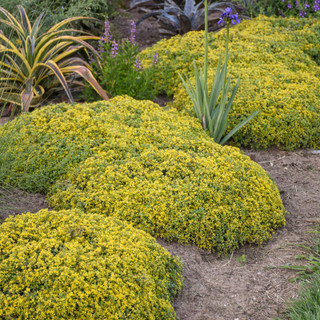
Daylilies
Uses:
- Pollinator Gardens
- Mass Planting
- Container Gardens
Features:
- Low Maintenance
- Pest & Disease Resistant
- Salt, Drought, Heat Tolerant
Sunlight:
- Partial Shade to Full Sun
- More Flowers With More Sun
- 4+ Hours of Direct Sun
Growing Zones:
- 4-9
- What is My Zone?
Daylilies are a very popular flowering perennial that is easy to grow. Typically gardeners will grow the plants in full sun locations for the beautiful flowers and little care required
Why Buy Daylilies Online
A daylily is a flowering plant, primarily from China, Korea, and Japan, in the genus Hemerocallis. The word Hemerocallis means "beauty for a day" because most daylily blooms open in the morning and die by night. However, the plants have several flower buds, so they typically stay blooming for several weeks during the summer. Horticulturalists have bred thousands of different varieties for their beautiful flowers. We have selected the best daylilies not only for their gorgeous flowers but also for their disease resistance, hardiness and heat tolerance.
Daylily Colors
Yellow – lemon, gold, to orange
Red – scarlet, carmine, tomato-red, maroon, wine-reds, and blackish-reds
Pink – pale pink through rose-pink to rose-red
Purple – pale lavender & lilac to deep grape or violet
White – cream, near-white, pale melon, light green
Other colors include brown, apricot, and peach
Daylilies come in virtually any color of flower you can think of
Wide range of flower colors
Very low maintenance & care needed
Great in mass plantings
Plant in full sun (at least 6 hours of direct sunligh)
Growing zones 3 to 9
About Daylilies

Daylily
China, Korea, and Japan, parts of North America
Perennials
Herbaceous
3 - 9
Yellow, Orange, Red, Bicolor, Golden/Brown, White, Purple/Darker hues
Late spring to early fall
Clumping, upright
Bees, butterflies, hummingbirds, and moths
Drought, Heat, Humidity, Salt
Deer, Rabbits, Voles and Moles, Disease, Pest
How To Use Daylilies In The Garden
Daylilies (Hemerocallis) deliver abundant flowers, with one plant able to produce 200 to 400 blooms in a single season. Originating from Asia and Central Europe, numerous varieties have been developed, including some with single and double flowers, or even emitting fragrance. Their adaptability allows them to thrive in USDA hardiness zones 3-9 with little effort.
Integrate daylilies into perennial borders or plant them en masse to function as a natural, weed-suppressing edge. They pair well with spring bulbs like daffodils, offering continuous color from spring to summer. These plants also look beautiful next to a fence or walkway as a small garden border. When planted in dense patches, they form a tough groundcover that blooms most of the summer.
Daylilies Care
Daylilies grow best in well-drained, loamy soil with at least six hours of daily sunlight. Keep soil moist during initial growth, and water about an inch weekly once established. Use compost when planting and apply balanced fertilizer in early spring for healthy development.
Remove spent blooms and cut back stems post-flowering to maintain vigor. Mulch in colder climates for winter protection. Potted daylilies need containers with proper drainage and a quality potting mix.
Learn More About Daylily Care

Daylily Companion Plants
Anything you grow with daylilies needs to like sunlight, and handle over 5 hours of direct sun per day. There are many shrubs, perennials, annuals and grasses that will complement daylilies. Some of our favorite plants to grow with daylilies are coneflowers, phlox, yarrow, butterfly bushes, red hot poker, ornamental grasses and sedum.

























